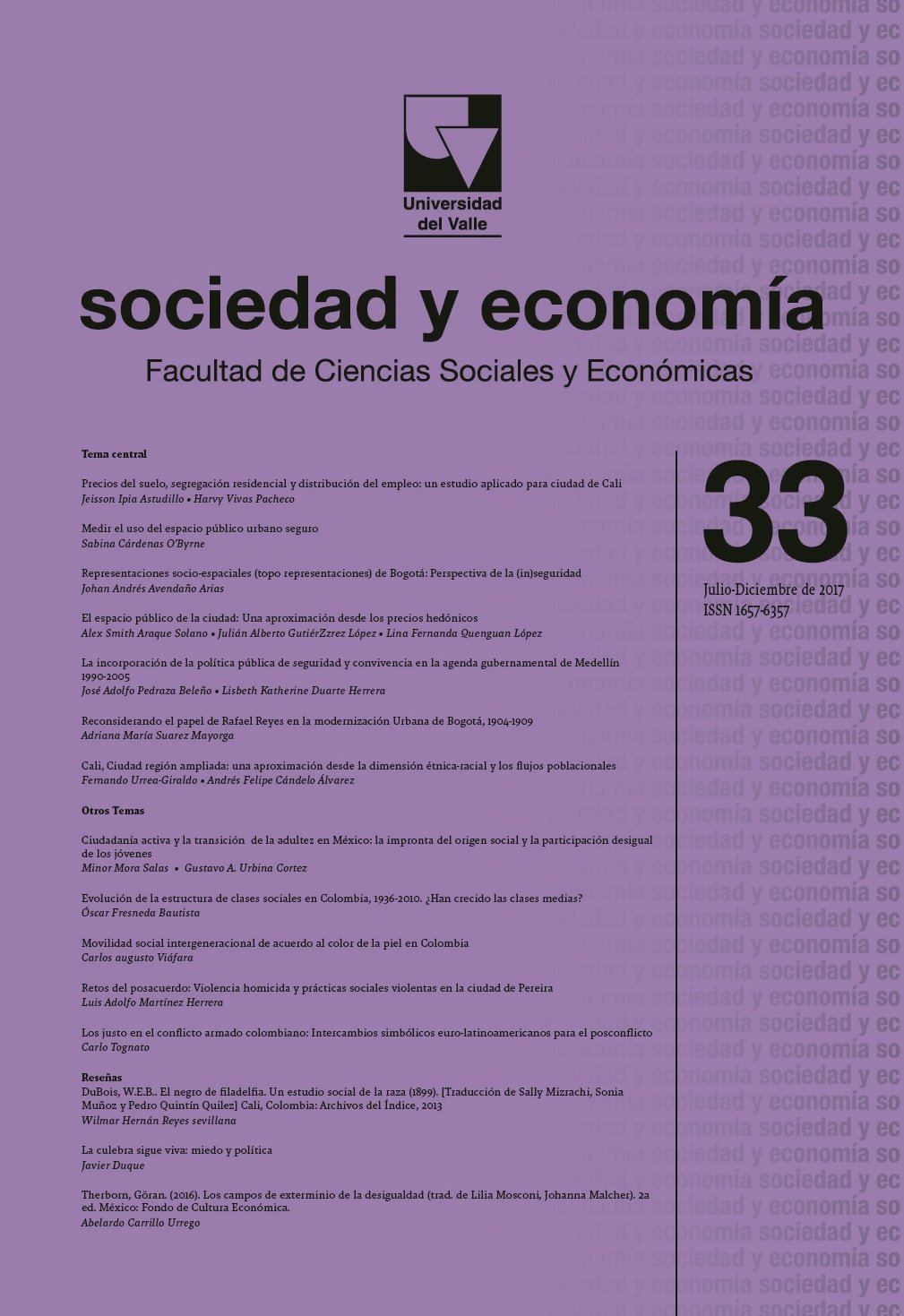Measuring the use of safer urban spaces
Main Article Content
This article addresses measuring the use of public space as a strategy for improving attitude towards safety; in such a way, that safety no longer poses a barrier for revaluing neighborhoods. Four aspects studied in a literature revision: the notion of neighborhood and fear as an operator of safety; safety as an agent for decision making in terms of use of space; mechanisms for measuring safe urban space; and Daily Spatial Practices. This literature was place in dialogue with a research titled Vital City (Cárdenas, 2016) that took place in two Colombian cities, Palmira (2014) and Cali (2016). The aim is to generate alternatives that may add to the questions formulated by the literature on measuring safe urban space and explore tools that may contribute to urban design in terms of use.
Revista sociedad y economía editada por la Facultad de Ciencias Sociales y Económicas de la Universidad del Valle se encuentra bajo una Licencia Internacional Creative Commons Atribución - No comercial 4.0
Basada en una obra en http://sociedadyeconomia.univalle.edu.co





